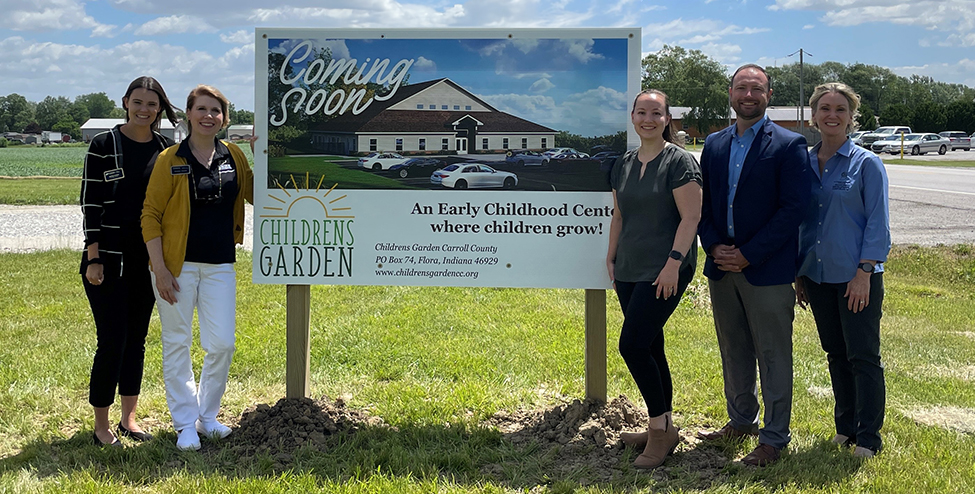Small Business and Employment in Indiana

Written by Indraneel Kumar, Andrey Zhalnin and Roberto Gallardo.
As COVID-19 rates are climbing across the state and country, new restrictions have been put in place. According to the Federal Reserve Bank of Philadelphia, these restrictions negatively impact small businesses, particularly in the retail trade; transportation; employment services; travel and tourism; arts, entertainment and recreation; and accommodation and food services. On the other hand, small businesses—defined as those with less than 20 employees—are known to employ 16.8% of the US workforce (Census Bureau’s Annual Survey of Entrepreneurs, 2016). Irrespective of different definitions employed for small businesses, some recent data reveal significant impacts on these businesses due to pandemic related restrictions. For example, Opportunity Insights’ Economic Tracker cites that compared to January 2020, number of small businesses opened in Indiana decreased by more than 32% in December 2020 (tracktherecovery.org). For revenues, the decline between January and December 2020 was 29.2%. Within a year, these metric record one-third of small businesses either closed or experienced decline in business. These are not small numbers by any means!
In this blog post we look at the share of small businesses that employed 19 people or less across different industries in 2018 and the distributions between rural and urban counties. Rural and urban counties were defined based on the Office of Management and Budget designation.
A metropolitan (or metro) county refers to central counties with one or more “urbanized areas” of 50,000 persons or more, as well as outlying counties that have strong economic ties to the central counties. Outlying counties are deemed to be part of a metro area if they have 25 percent or more of their employed workforce commuting to the central county, or if 25 percent or more of the outlying county’s employed labor force is made up of commuters from the central city.
Nonmetropolitan counties, on the other hand, are classified into one of two groups – micropolitan or noncore. Micropolitan counties have one or more urban clusters of 10,000 to 49,999 persons, as well as outlying counties with 25 percent or more of their employed population commuting either to the central micropolitan county or from the micropolitan county to the outlying county. On the other hand, noncore counties are all other counties without an urbanized area of at least 10,000 people and no strong commuting ties to metro or micro counties.
The chart below compares the proportion of total employment in all industries by small businesses among the different county types (metro, micro, or noncore). Notice how in rural or noncore counties small businesses accounted for a little more than one-fifth of employment compared to 14.5% in urban or metro counties. In other words, a higher share of workers in rural counties are employed by businesses with less than 20 employees.
However, as pointed out before, not all industries have been affected the same way by COVID-19. For this reason, the graph below breaks down the share of jobs from small businesses across different industries by county type. Graph has been sorted in descending order based on the share of jobs in rural or noncore counties. In rural counties (noncore), small businesses accounted for more than one-quarter of all jobs in 10 industry sectors. The top 5 were in (1) other services; (2) real estate and rental and leasing sector, (3) construction, (4) professional, scientific and technical services; (5) agriculture and forestry. Among those 10 industries, where at least one-quarter of jobs were provided by small businesses, are those that were identified by the Federal Reserve Bank of Philadelphia to be the most vulnerable to COVID related restrictions, specifically retail trade, transportation and warehousing, and accommodation and food services, , arts, entertainment and recreation.
Regarding the other non-metropolitan group of counties—micropolitan counties, it is worth pointing out that the arts, entertainment and recreation sector was responsible for a particularly high proportion of employment by small businesses reaching almost 57%.
Next, let’s look at Indiana counties and their share of total jobs by small businesses on a county by county basis. Please note that this map is interactive. You can select the industry to the right and the share of jobs from small businesses will be displayed.
When looking at all jobs or industries (All NAICS sectors was selected on radio menu to the right), Parke County stands out as having the highest share of its jobs provided by small businesses with 40.3% followed by Franklin County with 34%. What about the industries identified as being affected the most by COVID-19?
In the arts, entertainment and recreation sector 30 counties have people employed exclusively by small businesses (displayed as 100% on the map). For example Brown county’s economy was relying heavily on arts, entertainment and recreation sector which is reflected on the map. In the construction sector, about 29 counties had more than 70% of workers employed by small businesses. Only 4 counties had a large proportion (70% or higher) of workers employed by small businesses in accommodation and food services. In the transportation and warehousing sector, 16 counties had large proportion (70% or higher) of people employed by small businesses. In the retail industry, no county exceeded 50% of workers employed by small businesses.
In conclusion we would like to emphasize that the COVID -19 impact have not been affecting all counties and types of industry sectors the same way. Nonmetropolitan (noncore and micro) counties have a significant portion of workers employed by small businesses and seem to be the most vulnerable to the impact across all but a few industries. The top three affected industries for all counties were “Other Services” (includes various repair services, parking, laundry, beauty shops and barbers, civic organizations and others), and Real Estate and Rental and Leasing and Construction.
This information can be useful for the state and local agencies when deciding on priority areas and industries for distribution of financial aid and tax relief measures for small businesses.

Andrey Zhalnin is a GIS/data analyst for the Purdue Center for Regional Development, joining the staff in 2011. Andrey uses a variety of GIS and... read more




